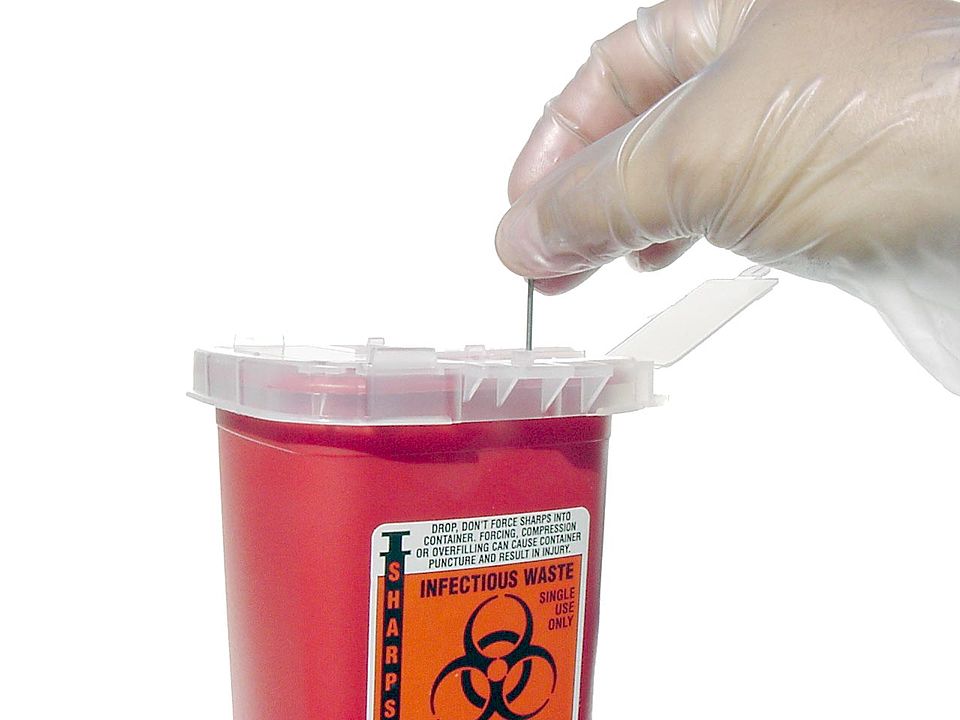17.2 Anatomy and Physiology Lab Guidelines
Anatomy and Physiology Lab Guidelines[1]
Dress Code
The lab enforces a strict dress code for the safety of all lab participants. Students who do not meet the following dress code may not be allowed to participate in lab activities. The dress code during lab includes the following:
- Closed toe shoes must be worn in the lab at all times. (No sandals, flip flops, heels, or clogs.)
- Long pants are required. (No shorts, skorts, or skirts.)
- Long hair must be tied back.
General Rules
As specimens and chemicals are routinely handled in the anatomy and physiology lab, all individuals who enter the lab must abide by the following rules:
- No eating, drinking, or chewing gum.
- Lab goggles should be worn when handling chemicals, specimens, or biohazards.
- Face shields should be worn when handling specimens.
- Gloves should be worn when handling chemicals, specimens, or biohazards.
- Hands should be washed before exiting the lab.
- Be respectful and courteous to all individuals working in the lab.
- Horseplay and rowdy or disorderly behavior are unsafe and will not be tolerated.
- Report any injury or incident, no matter how minor, to the instructor.
- Keep all work areas clean. Models, microscopes, slides, and any other equipment or supplies must be put away. If using specimens or biohazards, the work area should be cleaned and disinfected before leaving the lab.
Safety Features of the Anatomy and Physiology Lab
The anatomy and physiology lab is equipped with several safety features to keep students and staff safe. Please take a moment at the beginning of the first lab to locate the following:
- Fire extinguisher
- Emergency eye wash station
- Chemical shower
- First aid kit
Equipment Safety
The anatomy and physiology lab has numerous pieces of equipment that enhance the learning experience. Make sure to use equipment exactly as directed and only under the supervision of the instructor. Turn off and unplug all equipment when finished.
If broken glass occurs, clean up the area with a broom and dustpan, not your hands. Dispose of contents in the glass disposal container.
Handle all anatomical models with care. Models are very expensive and used by multiple classes each semester. Models may not be removed from the lab.
Chemical Safety
Treat every chemical as though it were a hazardous substance by using gloves and wearing safety goggles when handling. Only work with chemicals under the direct supervision and instruction by the instructor. Never smell or taste a chemical. Do not mix chemicals. Dispose of chemicals as instructed by your instructor, as it may not be safe to pour them down the sink.
Biohazard Safety
Gloves and safety goggles should be worn when working with biohazards, including saliva, urine, and blood. Biohazardous slides should be disposed of in the red sharps containers. See Figure 17.1[2] for an image of a sharps container.

Physical Safety
Please be careful when walking around the lab. Backpacks should be kept out of the way and not left on the floor where they can be a tripping hazard. Use caution when adjusting chairs, and be mindful of the other students working in the lab.
Medical Concerns
Pregnant students should not handle specimens and should only observe. If you are breastfeeding or pregnant or have any other medical concerns about working in a laboratory, please check with your physician. Your instructor can provide Material Safety Data Sheets (MSDS), if needed, but only your physician can advise you on your medical condition.
View this supplementary YouTube video[3] on General Lab Safety: General Lab Safety.
- Backus, G., Wangerin, H. W., & Rodgers, P. (2022). Laboratory safety. In Anatomy and Physiology I OER Lab Manual. Northern Virginia Community College. https://pressbooks.nvcc.edu/ap1labmanual/chapter/chapter-1/ ↵
- “Sharps_Container” photographed by William Rafti of the William Rafti Institute is licensed under CC BY 2.5 ↵
- Amoeba Sisters. (2017, August 13). General lab safety [Video]. YouTube. All rights reserved. https://www.youtube.com/watch?v=MEIXRLcC6RA ↵

